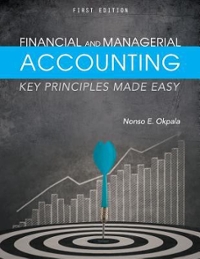
Problem 1 (30%) A space agency has decided to fund an active space debris removal (ADR) technology demonstration mission and needs to select the debris object to deorbit. They have narrowed down their options to three possible targets in similar orbits, and have decided on four key criteria to make their evaluation: CR-1 - Mass of debris object measured in kg, where greater mass is preferred. CR-2 - Natural orbital decay timeframe of the debris object (assuming no collisions) measured in years, where a larger timeframe is preferred. CR-3 - Total collision probability (TCP) of an object measured as a summation of all pairwise collision probabilities with existing objects (method not detailed in this problem), where a greater TCP is preferred. CR-4 - Number of similar sized objects measured by the total number of existing objects with dimensions within a specified tolerance of the target object (method not detailed in this problem), where a greater number of similar sized objects is preferred. To perform their evaluation of alternatives, they require your assistance in completing their decision-making using the Analytic Hierarchy Process (AHP). Using the tables below for relative importance and relative preference, provide the following: (a) correct the obvious pairwise comparison error in Table 1 and explain the error. Then, using the corrected Table 1 and Tables 2-5, (b) determine the relative importance, w, for each criterion, (c) solve for the overall score (Om) for each alternative debris object, and indicate the debris object that you would recommend based on these scores and why. Lastly, (d) what step would you have to perform to check if the provided comparison value tables are acceptable? Table 1. Criteria relative importance CR-2 1/2 1/6 1/3 1 1/3 1/2 CR-3 2 1/2 CR-3 CR-4 CR-1 CR-2 CR-1 1 2 6 3 3 2 2 1 CR-4 Table 2. Relative Preference for CR-1 Obj-1 Obj-3 Obj-1 1 2 4 Obj-2 1/2 1 2 Obj-3 1/4 1 Table 3. Relative Preference for CR-2 Obj-1 Obj- Obj-1 1 1/2 1/5 Obj-2 2 1 1/3 Obj-3 5 3 1 1/2 Table 4. Relative Preference for CR-3 Obj-1 Obj-2 Obj-3 Obj-1 1 1/5 2 Obj-2 5 1 9 Obj-3 1/2 1/9 1 Table 5. Relative Preference for CR-4 Obj-1 Obj-2 Obj-3 Obj-1 1 1/6 Obj-2 6 1 3 Obj-3 2 1/3 1 1/2 Problem 1 (30%) A space agency has decided to fund an active space debris removal (ADR) technology demonstration mission and needs to select the debris object to deorbit. They have narrowed down their options to three possible targets in similar orbits, and have decided on four key criteria to make their evaluation: CR-1 - Mass of debris object measured in kg, where greater mass is preferred. CR-2 - Natural orbital decay timeframe of the debris object (assuming no collisions) measured in years, where a larger timeframe is preferred. CR-3 - Total collision probability (TCP) of an object measured as a summation of all pairwise collision probabilities with existing objects (method not detailed in this problem), where a greater TCP is preferred. CR-4 - Number of similar sized objects measured by the total number of existing objects with dimensions within a specified tolerance of the target object (method not detailed in this problem), where a greater number of similar sized objects is preferred. To perform their evaluation of alternatives, they require your assistance in completing their decision-making using the Analytic Hierarchy Process (AHP). Using the tables below for relative importance and relative preference, provide the following: (a) correct the obvious pairwise comparison error in Table 1 and explain the error. Then, using the corrected Table 1 and Tables 2-5, (b) determine the relative importance, w, for each criterion, (c) solve for the overall score (Om) for each alternative debris object, and indicate the debris object that you would recommend based on these scores and why. Lastly, (d) what step would you have to perform to check if the provided comparison value tables are acceptable? Table 1. Criteria relative importance CR-2 1/2 1/6 1/3 1 1/3 1/2 CR-3 2 1/2 CR-3 CR-4 CR-1 CR-2 CR-1 1 2 6 3 3 2 2 1 CR-4 Table 2. Relative Preference for CR-1 Obj-1 Obj-3 Obj-1 1 2 4 Obj-2 1/2 1 2 Obj-3 1/4 1 Table 3. Relative Preference for CR-2 Obj-1 Obj- Obj-1 1 1/2 1/5 Obj-2 2 1 1/3 Obj-3 5 3 1 1/2 Table 4. Relative Preference for CR-3 Obj-1 Obj-2 Obj-3 Obj-1 1 1/5 2 Obj-2 5 1 9 Obj-3 1/2 1/9 1 Table 5. Relative Preference for CR-4 Obj-1 Obj-2 Obj-3 Obj-1 1 1/6 Obj-2 6 1 3 Obj-3 2 1/3 1 1/2







